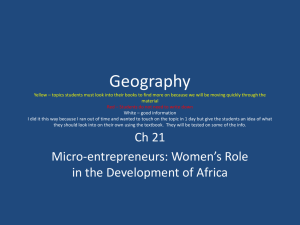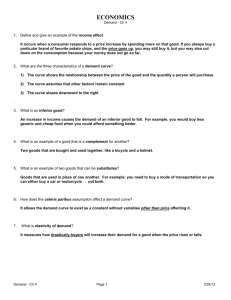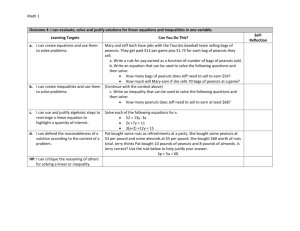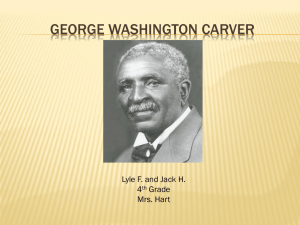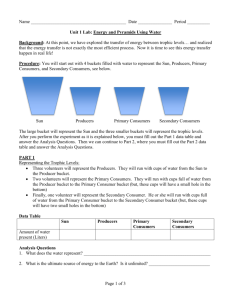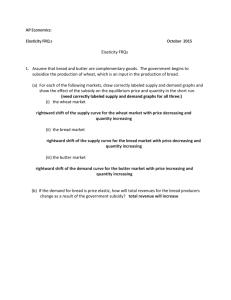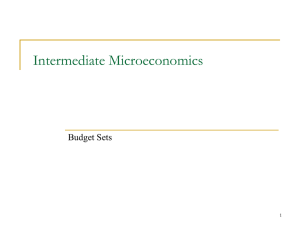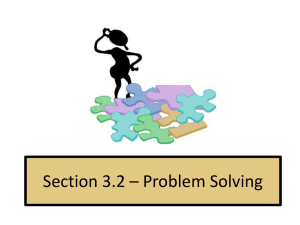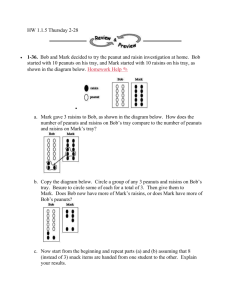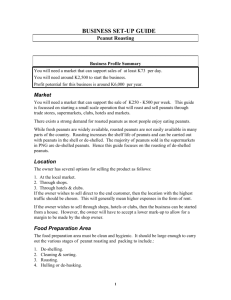Energy Efficiency
advertisement
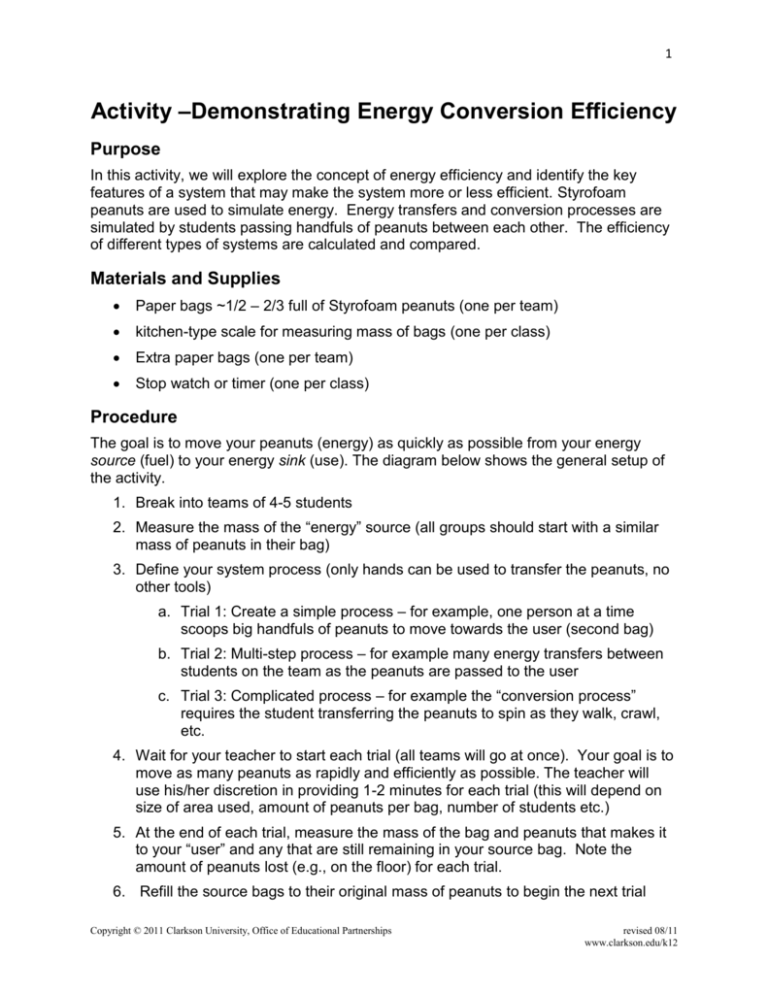
1 Activity –Demonstrating Energy Conversion Efficiency Purpose In this activity, we will explore the concept of energy efficiency and identify the key features of a system that may make the system more or less efficient. Styrofoam peanuts are used to simulate energy. Energy transfers and conversion processes are simulated by students passing handfuls of peanuts between each other. The efficiency of different types of systems are calculated and compared. Materials and Supplies Paper bags ~1/2 – 2/3 full of Styrofoam peanuts (one per team) kitchen-type scale for measuring mass of bags (one per class) Extra paper bags (one per team) Stop watch or timer (one per class) Procedure The goal is to move your peanuts (energy) as quickly as possible from your energy source (fuel) to your energy sink (use). The diagram below shows the general setup of the activity. 1. Break into teams of 4-5 students 2. Measure the mass of the “energy” source (all groups should start with a similar mass of peanuts in their bag) 3. Define your system process (only hands can be used to transfer the peanuts, no other tools) a. Trial 1: Create a simple process – for example, one person at a time scoops big handfuls of peanuts to move towards the user (second bag) b. Trial 2: Multi-step process – for example many energy transfers between students on the team as the peanuts are passed to the user c. Trial 3: Complicated process – for example the “conversion process” requires the student transferring the peanuts to spin as they walk, crawl, etc. 4. Wait for your teacher to start each trial (all teams will go at once). Your goal is to move as many peanuts as rapidly and efficiently as possible. The teacher will use his/her discretion in providing 1-2 minutes for each trial (this will depend on size of area used, amount of peanuts per bag, number of students etc.) 5. At the end of each trial, measure the mass of the bag and peanuts that makes it to your “user” and any that are still remaining in your source bag. Note the amount of peanuts lost (e.g., on the floor) for each trial. 6. Refill the source bags to their original mass of peanuts to begin the next trial Copyright © 2011 Clarkson University, Office of Educational Partnerships revised 08/11 www.clarkson.edu/k12 2 7. Calculate the efficiency of each trial 8. Answer the discussion questions Example energy transfer and conversion processes for each trial Energy Source 1 Sink 1 (energy user) Energy Source 2 Sink 2 (energy user) Energy Source 3 Sink 3 (energy user) Results Fill in the table on the following page as you complete your trials. Discussion Questions: 1. Was any system 100% efficient? If yes, what was done to make it so? 2. Which were the least efficient systems? Why? 3. What contributed to greatest losses? Describe. 4. What happens to the “energy” (as represented by peanuts) that is “lost”? Copyright © 2011 Clarkson University, Office of Educational Partnerships revised 08/11 www.clarkson.edu/k12 3 Results Table for energy efficiency activity Trial Description of system Peanuts in starting bag (g) Peanuts remaining at source (g) Peanuts in ending bag (g) 1 2 3 Efficiency is calculated as: Efficiency (%) 100 Copyright © 2011 Clarkson University, Office of Educational Partnerships Useable energy output . Energy value in revised 08/11 www.clarkson.edu/k12 System efficiency (%)
